Archaeological finds in, and just outside, St Laud’s Churchyard suggest that there may have been an Iron Age (800 BC – 43 AD) settlement at this spot. The excavation and their locations are shown in the photos below. The churchyard was subsequently extended to include this area.
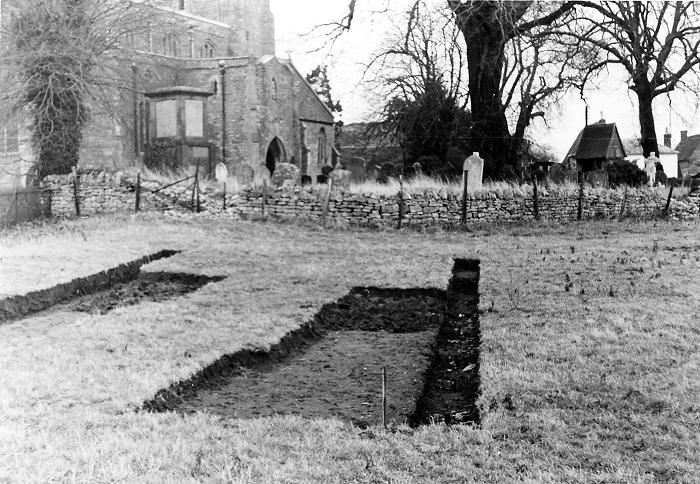
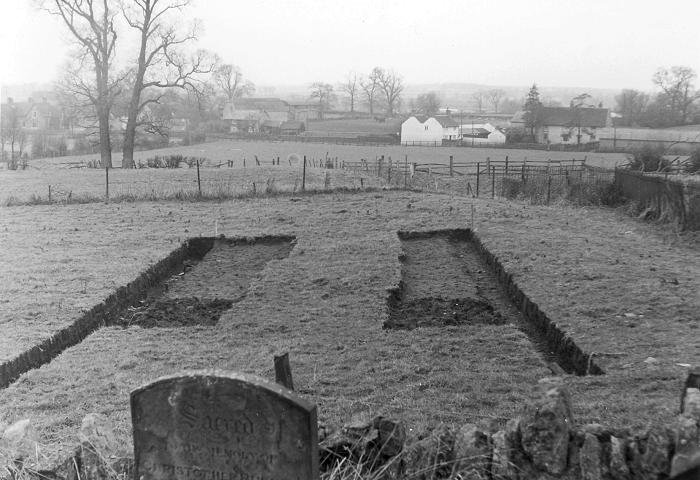
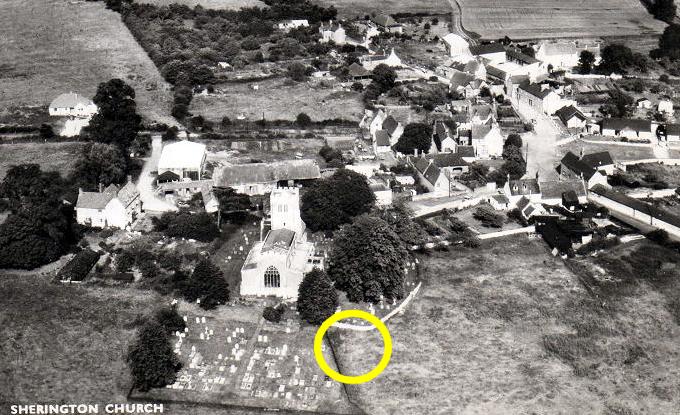
Iron Age Settlement
Details of the finds are included in Records of Bucks, Vol 19, Part 4, 1974, Pages 373-421, ‘Some Iron Age Pottery From Mid and North Bucks with a Gazeteer of Associated Sites and Finds’ by R Cain, D C Mynard and H Waugh, which records many such sites in the area. The information below and the illustrations are extracts from that source.
This site is in a rather different category from the the others in that it lies not beside the Ouse but on higher ground, and may be one of a series of defended hilltops in strategic positions along the river valley. (Reference: D C Mynard ‘Archaeology of North Bucks, The Iron Age’, W&DAS Journal 2 (1969) 18-24)
The site is now Sherington Churchyard and traces of the defensive ditch can still be seen. The sherds illustrated were found in the spoil of graves dug in the west end of the Churchyard, they include hand-made wares and Belgic Pottery.
Hand-made wares

Dull brown ware, with a few grits; outer surface roughly smoothed.

Soft, rather ‘corky’ ware; brown core, outer surface black; inner surface reddish brown.

Fairly hard ware; black core. blackish-brown surface. The angle is uncertain; it might possibly have come from a vessel resembling Barley 21 and 22.
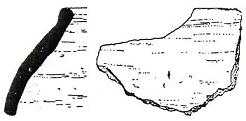
Hard ware; dark grey core, patchy reddish-brown surface, smoothed, matt. The ware resembles some of the Hunsbury wares quite closely. For globular jars of the same general type cf. Wilbury Hill 29, also Barley 76.
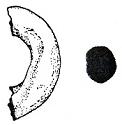
Greyish-brown core, lighter brown surface; fairly hard ware, with smoothed surface cf. Leckampstead (List II no. 16).
Wheel-thrown sherds – Belgic Pottery
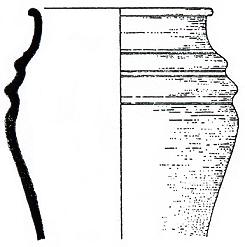
Dark grey ware; smoothed, slightly soapy surface. Exact parallels are not common; cf. Tottenhill, Norfolk (Iron Age in Norfolk by R Rambid Clarke in Arch Journ, IANS, Fig 9, 4), there might possibly be a distant relationship with Weathampstead no. 8 (Versulamium 1936 PI XLIX). The cordons are of the same type as those on the hollow-cordoned beakers.
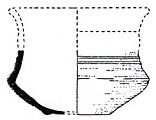
Sandy, fine-granulated ware; grey core, reddish-brown surface. The form is possibly a variant of Camulodunum 216-217.
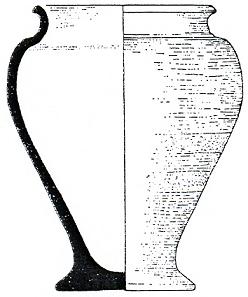
Greyish-black ware, smoothed on neck and shoulder; two matt zones on lower part of body. cf. Swarling 9 (=Birchall, 1965, no 35) from grave 18, which also contained a corrugated urn and was assigned by Dr Birchall to her Kent ‘Middle’ Group.
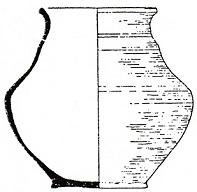
Very soft, soapy ware; grey core and bright orange surface, which has remained smooth though much worn and abraded.
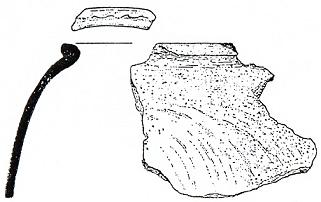
Chalk and shell-gritted ware, soapy; grey core, orange/pink-grey surface; very slight downward brush-marks just visible below shoulder.
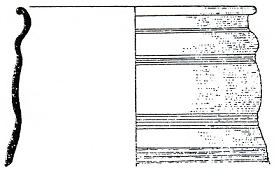
Soft, fine ware, dark grey core, brownish-range surface, carefully smoothed and probably originally burnished.
Sites
- List I – Earthworks
SP 890 468 A ditch suggesting a possible enclosure of sub-rectangular type just outside the Churchyard on the SW.
W&DAS Newsletter. Plan made by Wolverton and District Archaeology Society in BCM Sherds BCM 39.56 - List II – Site producing hand-made pottery
SP 890 468 Sherds found in Sherington Churchyard from graves dug at west end 1959-60
W&DAS Newsletter 2 (1957) BCM 39, 56. 11, 61 - List III – Site producing wheel-turned pottery
SP 890 468 Sherds found in churchyard from graves dug at west end 1959-60
W&DAS Newsletter 2 (1957) BCM 39, 56. 11, 61
Other Reports Related to this Site
- Wolverton and District Archaeology Society Journal 2 (1969) Archaeology finds for 1968: SP 890 468
Type B (site with hand-made and wheel-turned pottery) Sherds from graves in Churchyard during the 1950s and 1960s by members of the Society (Aylesbury Museum 128, 65)
Situation of the site and earthworks suggest also Type E (site on hilltop or high ground, possibly defensive)
Wheel-turned c30AD to end of first century AD, possibly late 1st century BC. - Wolverton and District Archaeology Society Newsletter 2 January 1957
Mr Keith Tull reports local press reports of possible Iron Age site contiguous to the Parish Church and Church Farm. Ted Bailey found in the Churchyard after a gravedigging some sizeable and handsome pottery pieces of the Hunsbury type passed for examination to the Ashmolean Museum. - English Heritage’s Pastscape website Monument No. 344886
SP 8896 4679, Iron Age enclosure. Belgic urn. Iron Age-Bronze Age pottery
Records of Bucks 17 1961-5 413
J Wolverton Arch Soc 2 1969 20 (D C Mynard)
Wolverton AS NL 11 1967 9, Wolverton AS NL 9 1965 11
St Laud’s Churchyard – Archaeological Evaluation
A proposal to extend St Laud’s Church necessitated a field evaluation of parts of the graveyard by Oxford Archaeology Unit. However, no significant archaeological features were found because of disturbance by post-medieval gravedigging. (reported in Records of Bucks, Vol 40, 2000)
The investigator’s report is:
Peter Gilbert Scott – St Laud’s Church Sherington, Buckinghamshire.
Archaeological Evaluation Report, SP 8910 4680
Oxford Archaeological Unit, September 1968
Other Iron Age Finds –
English Heritage’s Pastscape website Monument No. 344883. Bucks Museum Report, April 1960 – March 1963
Iron Age ‘A’ and Belgic sherds found at grid reference SP 89 46.
Also, several cropmarks have been seen at Lathbury:
- Two at Ash Spinney just across the river from Sherington, grid reference SP 8767 4584
National Monuments Record – English Heritage National Inventory NMR_NATINV-915480 - Rectilinear enclosures of possible Iron Age or Romano-British date – SP 8794 4534, SP 8797 4544, SP 8807 4528
National Monuments Record – English Heritage National Inventory NMR_NATINV-915493 - Probable round barrow site, of Prehistoric or Roman date – SP 8800 4528, SP 8800 4535
National Monuments Record – English Heritage National Inventory NMR_NATINV-344907
